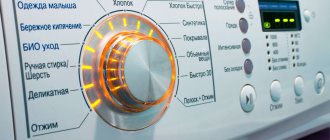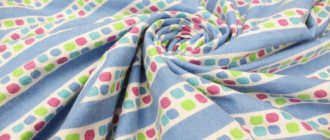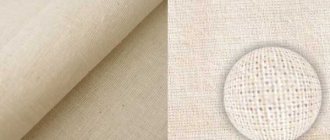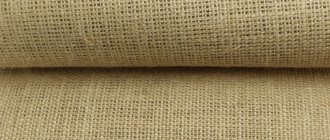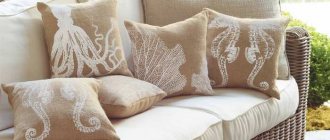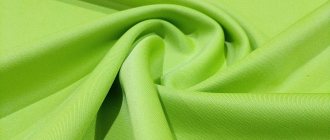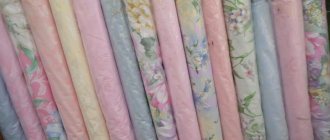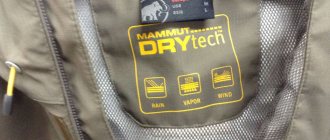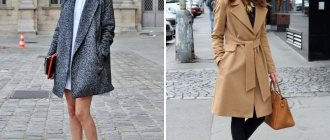Main production methods
The appearance, quality characteristics, and performance properties of the resulting material depend on the types of thread and spinning, and the method of mixing fibers. Currently, two types are used: monofilament and thread made by twisting fibers. In the first case, the fabric is externally aesthetic, but has crumbling ends. When using twisted varieties, the final fabric is durable and resistant to shedding, but acquires an uneven surface.
The quality and design are also influenced by production features:
- Mixing different fibers at the output produces a homogeneous fabric. Impregnations, moisture- and fire-resistant coatings can be applied to it. The back and front sides look similar.
- Mixing dissimilar threads ensures the production of double-sided material: the front surface is synthetic, the back surface is natural. The method is used when the external attractiveness of the material is important. Such species cannot be impregnated.
Important: The gloss or matt finish of the mixed product depends on the type of spinning. Rough and durable materials are produced using rotor spinning, while glossy, shiny varieties can be obtained using ring spinning.
Description of what kind of material it is
Blended fabrics are made by mixing different types of fibers. In this case, either two different fibers or more can be used. In most cases, this is done in order to combine the advantages of different materials and create one ideal canvas.
What they are depends on which fibers were chosen to be mixed. Most often these are threads of natural and synthetic origin. The definition indicates that this material is durable by combining the advantages of both fibers. And another advantage desired by users is that such a thing will not need to be constantly ironed.
Types and characteristics
Mixed fabrics are presented in a wide variety on the specialized market. The basis for differentiation is the percentage of natural and artificial components.
| Name | Compound | Characteristics |
| Greta | Cotton and polyester in a ratio of 35:65. The natural material is located on the inside, which provides tactile comfort. |
|
| Sisu | 23% cotton fiber, 77% polyester. Impregnated with water-repellent compounds. Produced in Belarus. |
|
| Tisi | 35% cotton. |
|
| Satori | High content of cotton fibers – over 50%. The homeland of the fabric is Japan. |
|
| Teredo | 67% polyester, 33% cotton. Made in Great Britain. |
|
| Polycotton | Cotton to polyester ratios can vary from 15:85 to 60:40. This affects density and other characteristics. |
With a high synthetic content, polycotton has poor air permeability, low hygroscopicity, and can cause skin irritation. |
| Orton | 50% polyamide fibers. They are located on the front side. Externally similar to twill. Has waterproof and oil-repellent impregnation. |
|
| Tomboy | 2/3 of the fabric is polyamide threads. |
|
| Memory | Natural fibers no more than 30%. Otherwise, the memory effect disappears. |
|
| NC | Tandem of nylon and cotton. Impregnated with moisture-resistant compounds. |
|
FYI: The final product may be marked "rip-stop". It means additional reinforcement with thin threads, which help maintain integrity during punctures or cuts. The aesthetic qualities of the fabric increase: they acquire an original texture.
Membranes
Membrane varieties can also be classified as canvases with a mixed composition. They have a multilayer structure. There are several modifications:
- A membrane is applied to a regular fabric from the inside out and protected with a lining.
- 3 layers (membrane, knitted mesh, fabric base) are connected by lamination.
- Three-layer material, but instead of mesh, foam jersey is used. Significantly reduces the weight of finished products.
The membrane material reliably protects from precipitation and wind, but at the same time allows evaporation to pass through, allowing the body to breathe and preventing the occurrence of sweat.
Blended fabric, what is it: composition and properties
There is no doubt that the most hygienic, safe and hypoallergenic are fabrics made from natural fibers - cotton, linen, wool or silk.
But in some cases, materials are required not only to have these wonderful qualities, but also to have increased strength, wrinkle resistance, and resistance to mechanical stress, which, alas, natural fibers cannot boast of.
The only and most correct solution would be to use mixed fabrics that combine the best properties of both natural and synthetic components.
Methods for producing mixed fabrics
Combined or mixed are materials that combine natural and chemical fibers.
Most often, cotton is used as a base, the content of which must be at least 30% so that the fabric does not lose its “naturalness”.
The rest is occupied by polyester, nylon, polyacrylic and other synthetic threads that improve the physical, mechanical and operational characteristics of products.
There are two main methods for producing composite fabrics. Let's look at each of them in more detail.
- The joining of fibers of different origins occurs at the spinning stage. As a result, the fabric, which is obtained from homogeneous yarn, looks the same on the front and back sides, can be easily dyed and impregnated with various water- and dirt-repellent compounds.
- In this case, the mixing of synthetic and natural fibers occurs directly during the manufacture of the fabric, that is, one of the threads forms the warp, and the second forms the weft. The most commonly used weave is twill weave. As a result, the front side of the material turns out to be synthetic, and the inside is natural, and the fabric looks very attractive. The disadvantage of this method is the impossibility of impregnation, since fibers with different properties react differently to treatment.
An important point to consider when producing mixed fabrics is the type of synthetic threads. When using so-called monofilament, which is a homogeneous continuous fiber, the material will have a glossy surface. Unfortunately, it is very difficult to cut and sew due to strong fraying at the edges.
https://www.youtube.com/watch?v=peG7X-rm11w
If a synthetic thread is formed by twisting several fibers, then the tendency of the fabric to shed is insignificant, but it will not shine or shimmer. Modern ring spinning machines allow us to resolve the dilemma between the visual appeal of textiles and ease of processing.
Properties of combined fabrics
The combination of fibers of different composition in one fabric gives it new unique properties. The main advantages of mixed materials are:
- pleasant tactile sensations;
- high strength and resistance to mechanical damage;
- elasticity and resilience;
- wind and waterproof;
- dirt protection;
- crease resistance and no shrinkage;
- maintaining the shape of the product;
- UV resistance;
- absence of harmful secretions;
- hypoallergenic and safe;
- ease of care;
- wear resistance and durability;
- low cost.
The negative aspects of combined materials include insignificant air exchange, the ability to form static charges, and not always sufficient hygroscopicity. These qualities are more pronounced the greater the percentage of synthetic threads present in the fabric.
Application of mixed fiber fabrics
Thanks to a rich set of positive properties and very affordable prices, mixed materials are widely used in many areas of human activity. But perhaps their most common application is the production of special clothing, which must meet the following requirements:
- protect a person from exposure to negative factors;
- ensure maximum safety;
- be convenient and comfortable;
- easy to clean and wash;
- have an aesthetic appearance.
In addition, there are a number of professions associated with the constant presence of people in the open air at extremely low temperatures, in conditions of increased gas pollution or dust. In these cases, combined fabrics will be indispensable.
Blended fabrics are easily dyed in various colors, they are often applied with special prints, for example, camouflage, as well as embroidery, company logos, etc. Here is a list of products that are sewn from such materials:
- military uniform;
- work clothes for employees of the Ministry of Emergency Situations, police and road services;
- uniforms for workers in various industries;
- overalls for personnel of medical institutions;
- sports and travel clothing;
- warm jackets, down jackets, overalls and raincoats;
- equipment for hunters and fishermen.
In addition, ordinary everyday skirts, trousers, dresses and suits are made from mixed fabrics, which are in constant demand. Combined materials are used to produce bags, backpacks, umbrellas, tents, car awnings, shoes and many other products.
The most common blended fabrics
Depending on the percentage of natural and synthetic fibers, the type of spinning and textile weave, materials with different characteristics are obtained. The most famous are the following combined fabrics.
Greta
Twill weave fabric is made from equal parts of polyester, which forms the outer side, and cotton, which goes on the back. It turns out dense, with small diagonal scars. Can be painted in various, mostly dark colors. The most common printed pattern is camouflage.
The synthetic front side provides the material with increased strength, stain resistance, water repellency and wind protection. The natural inner fabric comes into pleasant contact with the body, absorbs excess moisture and does not cause allergic reactions.
The fabric does not wrinkle and does not shrink after washing. During use, it keeps its shape well, does not fade in the sun and does not fade. There are several modifications of the material with various impregnations that protect against the penetration of oil, petroleum products, as well as with electrostatic protection.
Advice
Greta fabric is used to make workwear for law enforcement officers, security companies and oil and gas industry workers. In addition, tourists, mushroom pickers, hunters and fishermen wear jackets and overalls made of this material.
The water- and dirt-repellent properties of the greta were appreciated by agricultural workers, builders, road workers and utility workers. Even heavy dirt can be removed from the surface of clothing with a regular brush or cloth without the use of special products.
Sisu
This mixed fabric, produced in Belarus, has found its application in the medical industry, as well as in public catering establishments. The material consists of 23% cotton and 77% polyester, is pre-water-repellently impregnated, is easy to wash and retains its appearance for a long time: it does not peel, does not fade or change shape.
Let's talk about shades
The color palette has no restrictions. You can find a wide variety of shades. Pure white tones predominate in the workwear of health workers, cooks, and confectioners. Dark ones are preferred by representatives of repair services. Camouflage is widely used. It can be found among hunting suits and fishing equipment. The material lends itself well to dyeing, and the addition of artificial fibers ensures brightness and richness of colors, and their ability to maintain their original appearance for a long time. Prints, floral and geometric patterns are applied to fabric surfaces.
Properties
In this case, we can talk about properties only in general terms. Any individual fabric has its own individual characteristics. But all mixed materials are characterized by:
- Durability. Artificial materials have been developed to increase the durability of canvases. Therefore, their presence in the composition ensures resistance to mechanical damage.
- Density. Depends on the weave of the threads. If they are located freely, the canvas will be airy and light. With close adhesion of even thin threads to each other, the density increases.
- Security. Mixed products do not emit toxins and are hypoallergenic.
Note: Each material imparts its own properties to the mixed composition. Polyester makes the final product crease-resistant. Adding nylon will result in a fabric with an elegant shine. The inclusion of elastane will give the fabric softness, flexibility, and it will drape easily.
Blended fabric: characteristics
The description often depends on what materials were used to base the material. Thus, in the photo you can see different versions of the same base.
The composition of the mixed fabric is formed in two ways:
- threads of different compositions can be intertwined
- dissimilar fibers intertwine
In the first case, you can get a base that will be homogeneous. In the second case, the canvas will be natural on one side and synthetic on the other.
Find out what kind of material terylene is in another article.
Advantages
Materials with a mixed composition have become in demand among consumers due to their many advantages. They:
- Characterized by durability. The service life of some varieties reaches 5 years. For comparison, for cotton these indicators do not exceed 1-1.5 years.
- They have high performance properties: resistant to moisture, dust, and various temperatures.
- Provide comfort of use: they are hygroscopic, breathable, eliminating the development of pathogenic microflora.
- They are easy to care for: they don’t shed, don’t wrinkle, don’t shrink.
- Attracted by affordable price. The mixed material costs much less than natural material.
Please note: In pursuit of cheaper prices, some unscrupulous manufacturers add only a small percentage of natural fibers. This material has an aesthetic appearance and does not lose its shape for a long time, but its hygienic qualities leave much to be desired. Therefore, when purchasing, you should always study the label, which indicates the composition in percentage terms of components.
Flaws
With an optimal combination of natural and artificial components, mixed fabrics are practically free of disadvantages. When working with some materials, cutting difficulties may arise due to the special structure of the fibers. Defects are observed in cases where the composition contains a high percentage of synthetics. Such varieties become electrified and their hygroscopicity decreases. They can create a greenhouse effect and not maintain natural body temperature. At the same time, tactile characteristics also deteriorate: the material becomes hard to the touch, can rub the skin, and cause allergies.
Areas of application
Mixed fabrics have a very wide range of applications. It depends on their characteristics. There are special types of material that are impregnated with special compounds during production. They give the canvas water-repellent properties and protect from wind.
Among the products that are sewn from mixed materials are the following:
- Jackets, coats or raincoats;
- Tracksuits;
- Clothing for hunting and fishing, as well as for ordinary tourists;
- Medical uniform;
- Military uniform;
- Work clothes for different professions;
- Clothes for regular wear and holidays;
- Uniforms for maids and waiters;
- Bed linen and accessories;
- Bedspreads;
- Tablecloths, curtains;
- Tents and awnings;
- Shopping bags, umbrellas and much more.
Application area
The universal material has firmly entered modern life. You can meet it in various fields. First of all, it is used to produce workwear for workers in various industries. Where exactly the uniform is used depends on the composition:
- Fabrics with a high cotton content were appreciated by workers in the gas industry and aviation.
- Options with a predominance of synthetic threads (especially polyester) have found their place among builders, metallurgists, and medical workers.
- The combined fabric, impregnated with fire-resistant compounds, has become indispensable for workers in energy production.
- A mixture with a water-repellent, wind- and dirt-resistant coating is used for sewing outerwear for representatives of the police, the Ministry of Emergency Situations, and traffic police, that is, those people who spend a lot of time on the street.
Also, the combination of artificial and natural threads allows us to produce comfortable, reliable equipment for athletes, tourists, fishermen, and hunters. Mixed fabrics are also used for sewing everyday clothes: jackets, raincoats, children's overalls, skirts, dresses.
This is interesting: Most mixed formulations are classified as medical types: teredo, satori, tishi, shisu. For employees of security and law enforcement agencies, Greta and membrane camouflage are most often used, for workers in the food industry - Orton. Memory is used to make outerwear and casual clothing, while NC is in demand in the production of shorts, skirts, and trousers.
In addition, universal fabrics are found in home textiles (pillows, bed linen, blankets). They are used as covers for furniture, in the production of accessories (umbrellas, bags), car and country awnings, in the form of fabric inserts in summer shoes, for the manufacture of tents, and climbing equipment.
Blended fabric manufacturing technology and what it is
Mixed fabrics are materials made from different types of raw materials. It is also called "mixing". Most often we are talking about a mixture of natural and synthetic yarn, but there are also natural with natural, natural with artificial, artificial with synthetic and a mixture of synthetics.
Important! Finding such fabric is not difficult: any material that contains several components is a mixed material.
Natural and synthetic components are used in production
Mixed fabrics allow you to get the best from different types of raw materials. Examples:
- Natural materials are added to synthetic raw materials to make the material more breathable, breathable and pleasant.
- Natural fabric mixed with synthetics turns out to be stronger and more durable, painted in bright colors and cheap, that is, accessible. This includes silk blends and wool blends.
- Linen and cotton are easily wrinkled materials (linen is also hard), but with the addition of synthetics, things will become softer and will no longer wrinkle easily. If you mix linen or cotton with elastane, you get a stretchy fabric that can be gathered into beautiful folds.
- Wool does not hold its shape well, which can be solved by using cotton. Adding nylon to wool will make it stronger and brighter.
Wool benefits from being combined with nylon or cotton
Rules of care
Products made from mixed threads do not require special care, but some rules must be followed:
- Washing in an automatic machine is possible at a temperature not exceeding +40 degrees. Minimum time – 10 minutes.
- Home dry cleaning is prohibited. This procedure should only be trusted to specialists. In special institutions, after dry cleaning, products are dried with a stream of hot air and ironed. The temperature is +160 degrees.
Be sure to read the information on the label, as care for different fabrics may differ.
Greta
Even heavy dirt can be easily removed with a napkin or a regular brush. Machine washable using liquid detergents that do not contain chlorine.
Sisu
Hand and machine washing methods are allowed. Dries quickly. The product does not need ironing.
Tisi
Wash only at low temperatures. If there is colored trim or inserts, do not use bleaches. Iron from the wrong side.
Satori
Solid varieties can be boiled. Autoclaving (treatment with hot steam at high pressure) is allowed. When combining light and dark shades, the temperature should not exceed +40 degrees. When ironing, the soleplate of the iron should not be higher than +150 degrees.
Teredo
Washing is allowed at temperatures up to +85 degrees. Hot water will not affect color, size, shape. For snow-white products, bleaching with products containing chlorine is allowed. Teredo is usually labeled easycare, which means “easy care.” This nano-finish prevents creases and eliminates the need to iron the material.
Polycotton
When washing, be sure to turn things inside out (especially pillowcases and duvet covers). Ironing is only possible under gentle heat conditions. Dry naturally, but in a shaded place. Linen should be protected from direct sunlight.
Orton
Products can be washed at minimum temperature. Dry cleaning using hydrocarbons is also permitted. Bleaching is strictly prohibited. Ironing is allowed, but the thermal regime should not exceed +150 degrees.
Tomboy
Can be washed at temperatures up to +85 degrees. It is better to avoid machine drying. Products should be dried flat. There is no need to iron them.
For reference: 50 dry cleaning cycles deteriorate the quality characteristics of a tomboy made in the UK by only 10%. For similar materials produced in Russia, this figure increases to 40%, and for analogues from China it is 90%.
Memory
Suitable for hand and machine wash in cool water. Do not use machine spinning as this will negatively affect the properties of the fabric. The use of stain removers, solvents, and chlorine-containing bleaches is prohibited. Ironing is possible at a temperature of +150 degrees.
NC
The fabric is easy to clean. Thanks to the moisture-resistant coating, it dries quickly. But you need to squeeze it manually, without twisting the product. It is advisable to use moisture-absorbing material. NC should be washed rarely, as frequent washing has a detrimental effect on the impregnation. The material loses its moisture-resistant properties. Iron only from the wrong side.
